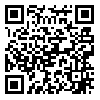Background: Histamine is a food-borne chemical hazard which causes scombroid poisoning. The efficiency of histamine recovery from fish is greatly influenced by selection of an appropriate extraction solvent. Hence, in this study the efficiency of different extraction solvents on recovery of histamine from fresh, frozen and canned fish was evaluated.
Methods: Fresh, frozen and canned rainbow trout samples were homogenized in six different extraction solvents including 0.1 N hydrochloric acid, 5% trichloroacetic acid, 75% methanol, 75% ethanol, 75% methanol-0.4 N hydrochloric acid and 75% ethanol-0.4 N hydrochloric acid. Samples were evaluated for recovery of known quantities of histamine added to fish tissue prior to extraction. The percent values of the recoveries were compared using ANOVA (SPSS 16.0).
Results: Findings of this experiment indicated that different extraction solvents provided different overall mean recoveries for histamine in fish tissue. Using a combination of acid and organic solvents provided a more efficient extraction solvent for histamine from fish tissue than acid or organic solvents alone. In addition, among the solvents used in this study, 75% ethanol-0.4 N HCl resulted in a more complete recovery of added histamine from fresh, frozen and canned fish tissue.
Conclusion: In order to obtain a more accurate measure of histamine in fish tissue, 75% ethanol-0.4 N hydrochloric acid appears to be a good choice for extraction.
Received: 14/03/30 | Accepted: 14/06/23 | Published: 14/09/15
| Rights and permissions | |
 |
This work is licensed under a Creative Commons Attribution-NonCommercial 4.0 International License. |


